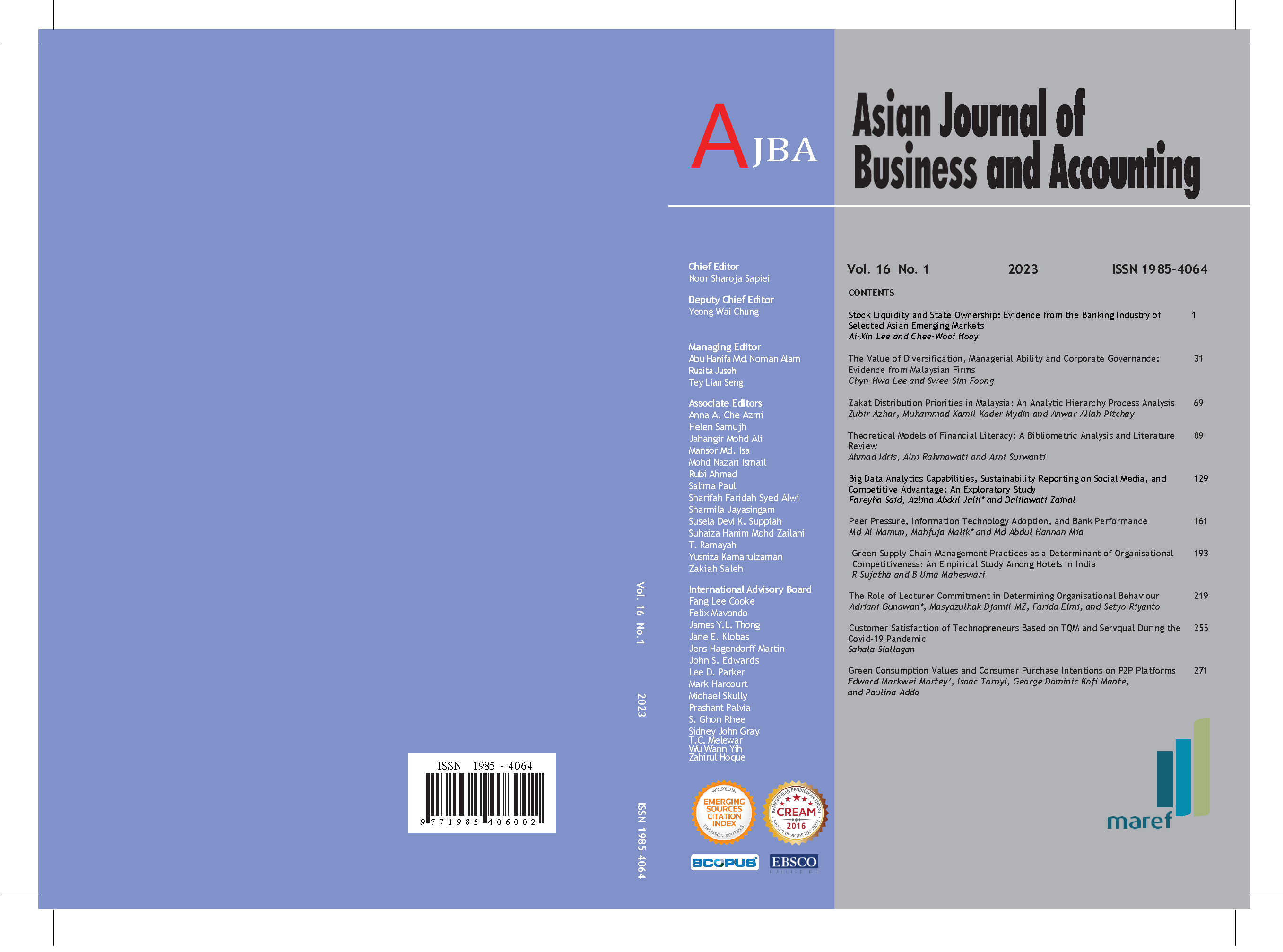Zakat Distribution Priorities in Malaysia: An Analytic Hierarchy Process Analysis
Main Article Content
Abstract
Manuscript type: Research paper
Research aims: A key objective of zakat institutions is to distribute funds efficiently and effectively. Despite its critical role in alleviating poverty, the distribution of zakat appears to have been overlooked by previous studies. Recognising such a gap, this study examines the distribution priorities of zakat funds in Malaysia.
Design/Methodology/Approach: Our study relies upon secondary data on the distribution of zakat funds between 2007 and 2015. We analyse the data using the analytic hierarchy process (AHP) technique (pair-wise technique analysis), which involves ranking zakat recipients and comparing them across all states in Malaysia.
Research findings: This study demonstrates that zakat funds were distributed to beneficiaries as mentioned in the Quran: hardcore poor (fakir), poor (miskin), zakat operator (amil), inclined to Islam (muallaf), slave (riqab), debtors (gharimin) wayfarer (fisabilillah) and stranded in path (Ibnu Sabil). The poverty groups and wayfarers were the top priority of Malaysian zakat institutions. Meanwhile, debtors, slaves, and those stranded in path were given the least importance.
Theoretical contribution/Originality: This study addresses the gap in the zakat literature by adding empirical evidence on the zakat distribution practices amongst all states in Malaysia in remedying the long-standing issue of poverty. The output of this study contributes to enhancing society’s understanding of the role of zakat institutions in combating poverty in Malaysia.
Practitioner/Policy implication: A clear policy that focuses on designing practical programmes that can enhance the living standards of poor people should be designed and reinforced in all zakat institutions.
Research limitation/Implications: The study’s data is limited from 2007 to 2015. This is due to the inconsistency and missing data related to the distribution of zakat. Nevertheless, this study extends the existing zakat management literature, especially in the context of zakat collection and distribution among beneficiaries. Furthermore, the present study highlights important issues on how to manage zakat funds in Malaysia practically.
